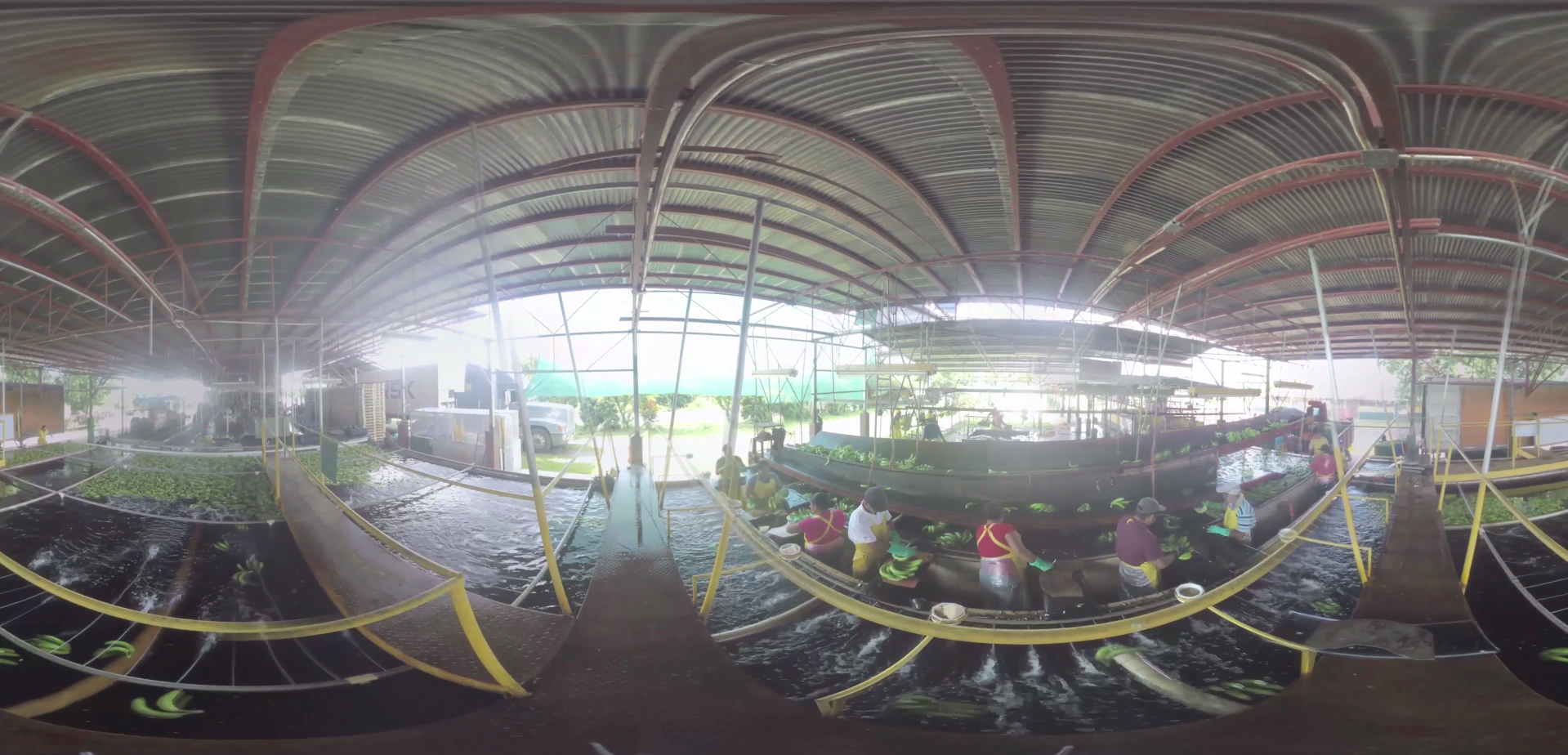In the province of Bocas del Toro, Panama, an odd device consisting of a tripod with a black sphere on top sits on the beach. Nearby, students from UNC-Chapel Hill hide behind trees and bushes, watching the light on the sphere blink slowly. It’s a strange scene, but it’s an integral part of the latest student-made international documentary project from UNC’s School of Media and Journalism.
The device is a 360-degree video camera. The students are hiding because, unlike a normal camera, it captures video from all angles, meaning they would be in the shot. The project, named Undercurrent, is led by several professors from UNC, including Steven King, a leading expert on 360 video.
“I’m trying to figure out how to take new technologies and use them to tell stories,” King says. Undercurrent does exactly that by using 360 video to show immersive images of beaches, banana plantations, and the coral reef in Bocas del Toro. This puts the viewer in the shoes of someone physically there — something the average camera can’t do. Although the technology is still emerging, King sees the enormous potential it has as a storytelling device, and not just for documentaries.
King is currently involved in a partnership between UNC and GEAR UP, a federal program that targets middle and high school students in an attempt to increase college attendance. He is developing a virtual reality app that uses 360-degree video to help potential students picture themselves in college. Inside the app, potential students will be able to look around a classroom mid-lecture or see the daily goings-on in the Pit as if they were actually there.
Inheriting a lifelong passion
King has taught several courses on interactive storytelling since coming to Carolina’s journalism school in 2011. He continues to research new ways to tell stories and engage audiences. “I get paid to play with cool stuff and new technologies, so it’s a pretty good deal,” King says with a laugh.
King inherited his interest in journalism from his grandfather — a photojournalist who left King his cameras in King’s freshman year of high school. He taught King how to use a camera, and when he was in 5th grade, they took photos together for an art contest that he won for his school. King joined the student newspaper his sophomore year of high school using the cameras his grandfather left him and went on to study photojournalism at Western Kentucky University, where King says he found his love for journalism.
Before coming to UNC, King worked with The Washington Post as both the director of video and the editor of innovations from 2008 to 2011. One of his projects followed Osama Bin Laden through text, photos, motion graphics, and video. The project was started upon news of Bin Laden’s death — and was completed just days later. “That was probably one of the biggest projects that I worked on in such a short amount of time,” King says.
King also boasts a well-stamped passport, having visited more than 20 countries. He spent the summer of 2015 in Thailand, helping the Thai government use media to reduce violence. “We looked at case studies from around the world, and the way the media cover Afghanistan or gang violence in Chicago,” he says. “How could the broadcasters show less violence? How could they have opportunities for minority groups to actually have a voice?”
The future of storytelling
In the midst of his presentation at Journalism Interactive 2016, a national conference that connects leading digital media experts with educators, King leaves the stage to get something. When he comes back, he’s followed by a four-legged cart with a 360-degree camera secured on top of it. The cart is King’s creation: a tracking rover and camera capable of following a person. Its purpose is to solve one of the fundamental issues with shooting video in 360 degrees: the videographer.
King’s robot, named duCille after the late three-time Pulitzer Prize winning photojournalist Michel duCille, allows the camera to move independent of a person while still following him or her. He envisions that this will allow for a more immersive storytelling experience in everyday news.
“It could track a reporter through a scene, and the reporter could be delivering a tour of a scene like a destruction area,” King says. “They could stop and talk to somebody, the robot will stop, and the users will be able to look around and see the whole scene while it’s going on.”
The robot is part of a larger vision of King’s that includes live streaming of 360-degree video. Currently, this type of filming requires a stitching process to display correctly. Since the device is actually a combination of several cameras, the individual videos must be stitched together into a “sphere” of videos for the immersive experience to work. Usually this is done in post-production, but it is possible to do live – it’s just a lot harder to pull off.
“Traditionally, live streaming is very expensive and requires lots of computers and crew,” King says. “I’ve been able to get it down to one laptop, two cameras, and stitched in real time.” His method, which several 360 videographers have started to pick up, can do this for under $5,000.
The next step, according to King, is to take that live stitching and apply it to the robot. Due to limitations like battery weight, though, he has not been able to combine the two yet.
Finding new ways to tell stories does not stop with 360 video. King sees augmented and virtual reality both as crucial components to the future of interactive storytelling. “We, as journalists, need to be telling stories within these media and defining the ethical standard for that,” he says. “I want us to find the best ways to use technologies that are emerging as storytelling tools. How do we tell it in a way they’ve never seen before?”


